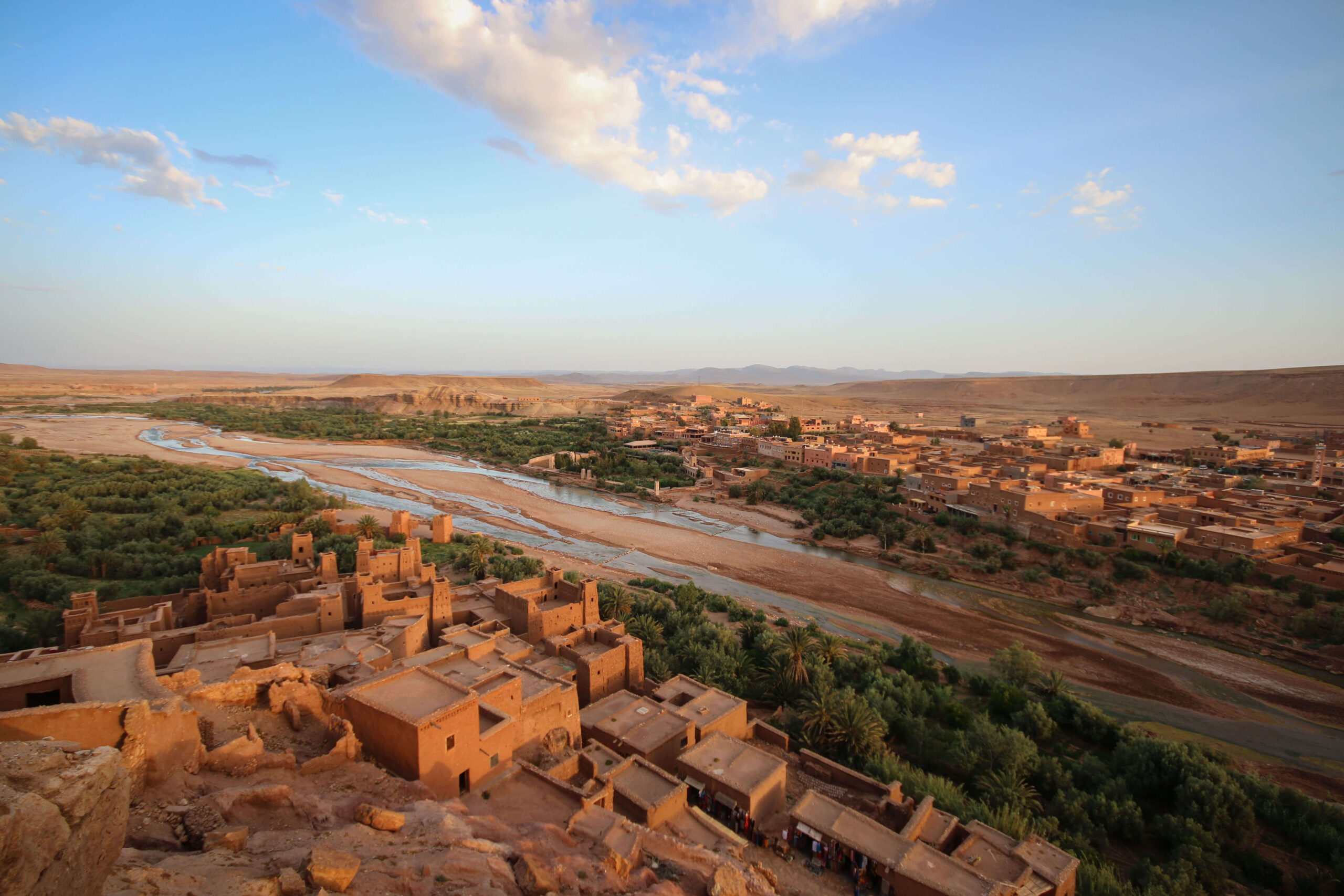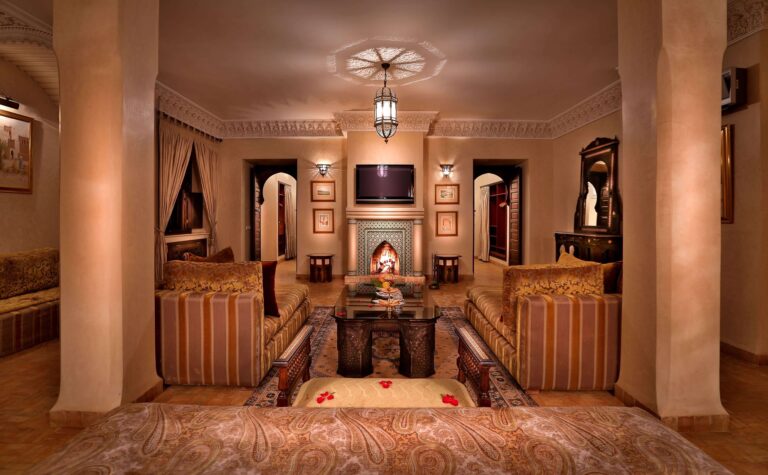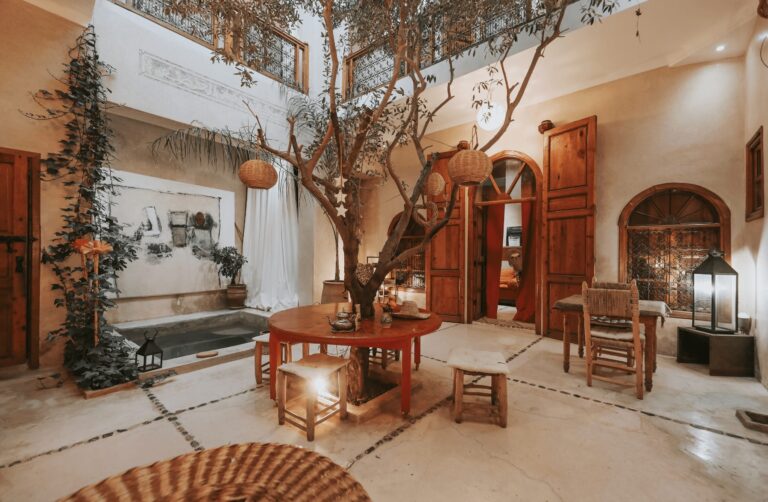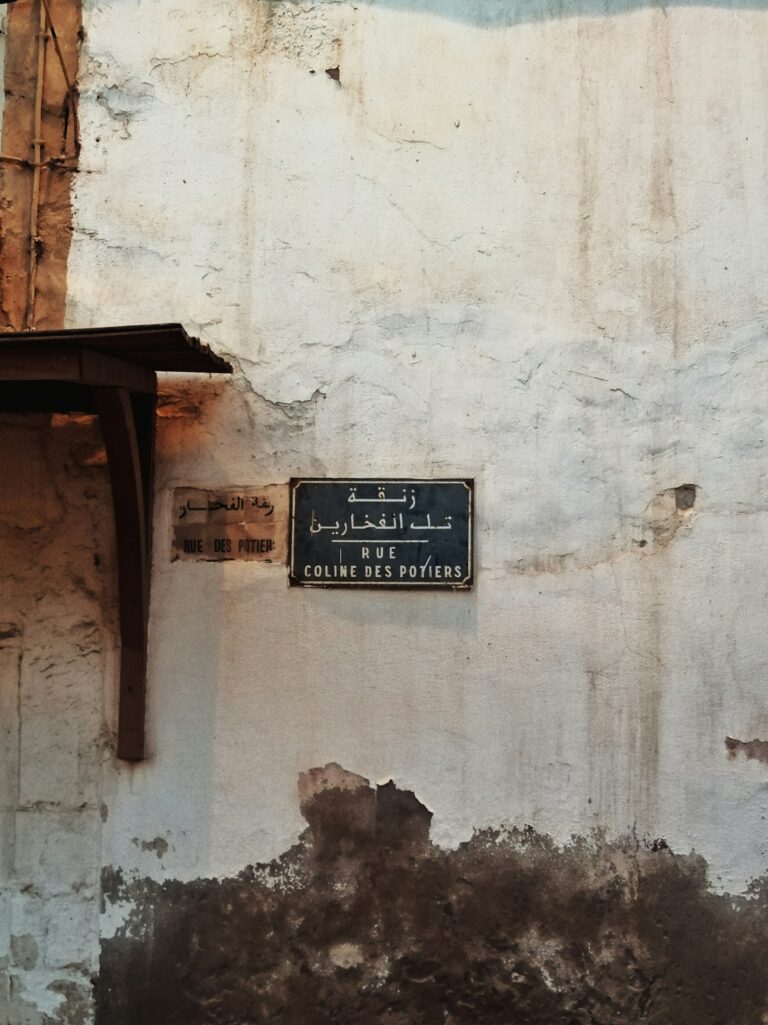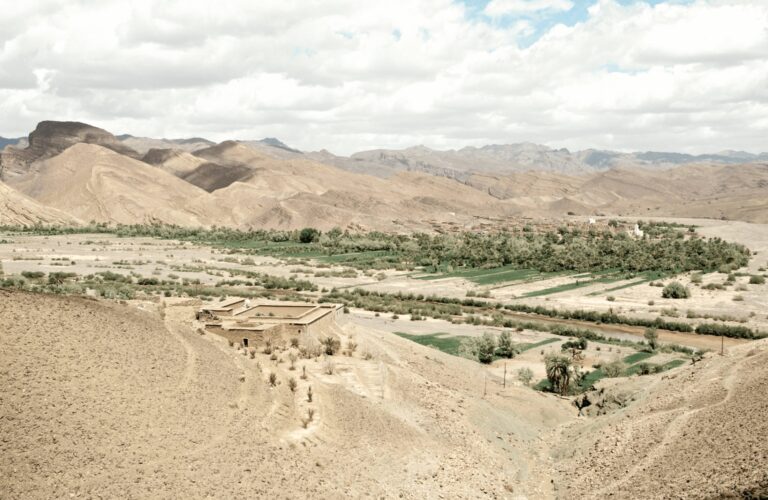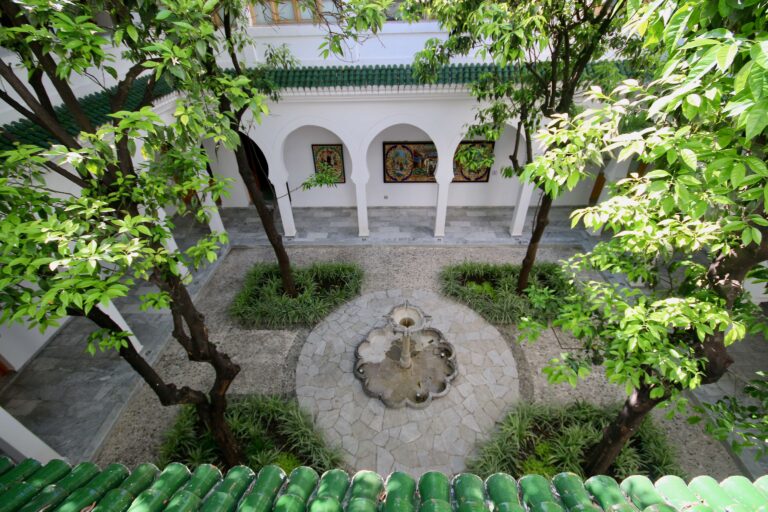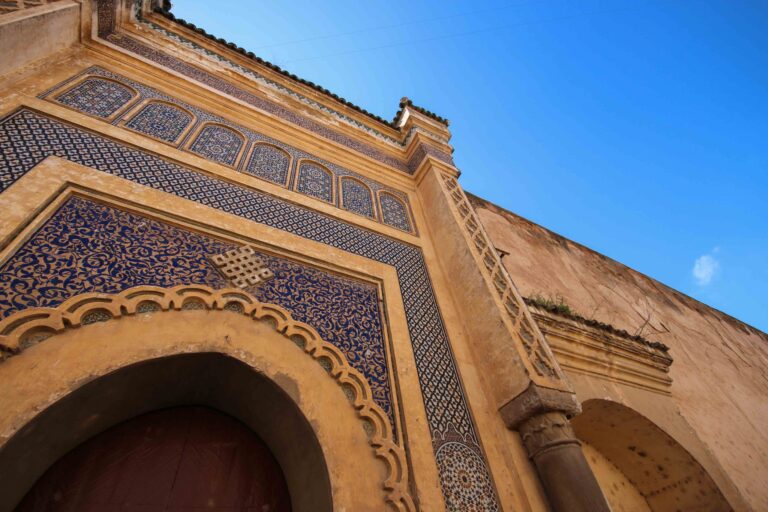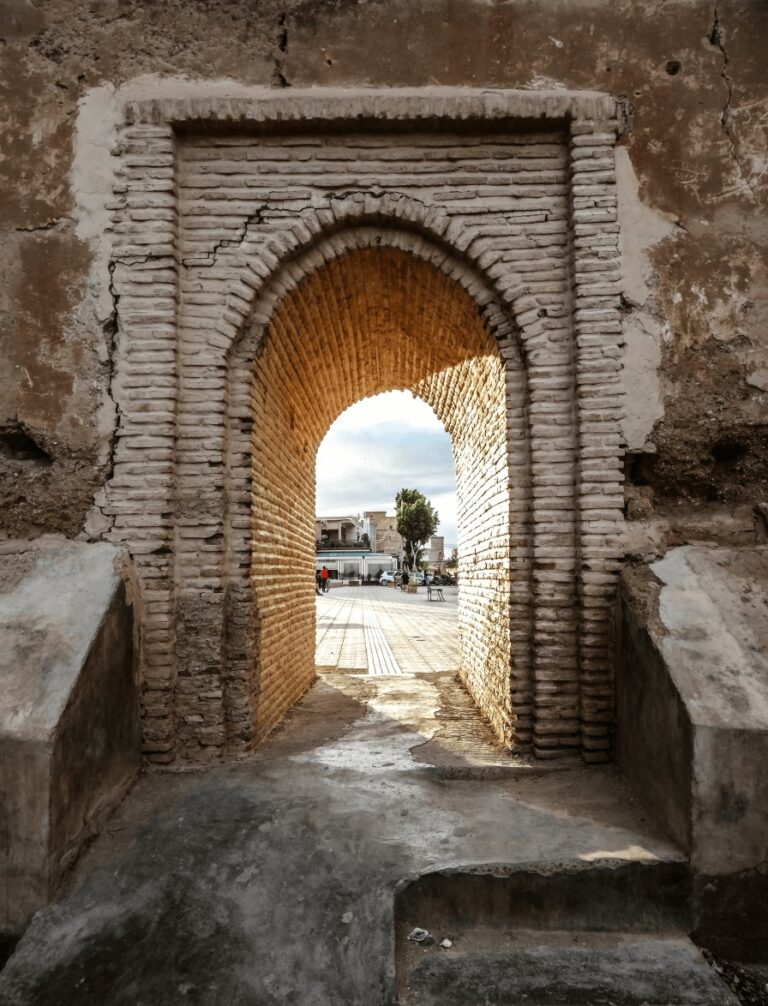A Cinematic Ksar: Essential Travel Guide to Ait Benhaddou
Looking for the best things to do in Ait Benhaddou or highly recommended places to stay? Discover the ideal time to visit, tips for getting there and the best Ait Benhaddou tours in this essential travel guide.
There are few places in Morocco quite as spellbinding as Ait Benhaddou, an ancient ksar that has watched over the Ounila Valley for centuries. Perhaps you’ve seen pictures of this enchanting site and are wondering: “Is Ait Benhaddou worth visiting?”
I’ve been lucky enough to visit Ait Benhaddou several times and I would go back in a heartbeat. The first time I visited, I couldn’t quite believe it was real as it felt like something straight out of a film.
In fact, scenes from “Lawrence of Arabia”, “Babel” and “Gladiator” have all been shot here (among many others). The vision of earthen clay buildings huddled along a hillside is really cinematic!
In years gone by, Ait Benhaddou served as an important stop along the trade route between the Sahara and Marrakech. For centuries, camel caravans laden with salt and spices would rest in the shade of Aït Benhaddou before continuing on their long journeys.
Today, this enchanting village stands as a remarkable example of traditional Moroccan architecture. So much so that it has been designated as a UNESCO World Heritage Site.
Walking through its winding alleys is like entering a living museum. It’s hard not to be transported back to another era. For me, Ait Benhaddou is definitely worth visiting! In fact, I think it’s one of the best places to visit in Morocco.
But with limited public transport options, getting to Ait Benhaddou independently is not easy. Renting a car in Marrakech or joining a guided tour are the most convenient ways to reach the historic site.
In this Essential Travel Guide to Ait Benhaddou, discover everything you need to know about exploring the ancient ksar. I’ve included tips and advice for getting there, top tours and the best places to stay.
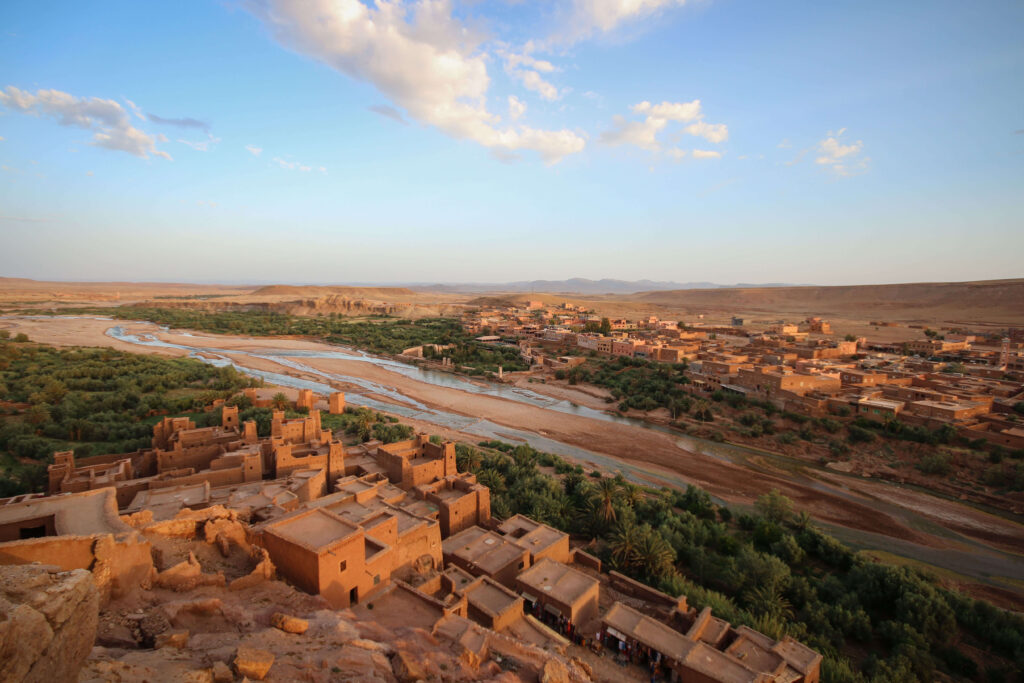
Disclosure: This article contains affiliate links, meaning I earn a small commission when you make a purchase. Affiliate links cost you nothing and ensure my content stays free!
BEST TOURS TO AIT BENHADDOU
Don’t have time to read the whole article? These are my top Aït Benhaddou tour recommendations:
One day Ait Benhaddou tours:
Two-hour guided tour of Ait-Benhaddou
Full-day Ait Benhaddou and Ouarzazate day trip from Marrakech
Multi-day Ait Benhaddou tours:
History of Ait Benhaddou
Strategically located along the trans-Saharan trade route, Ait Benhaddou’s fortified walls were established in the 11th century. It was designed to protect merchants and travellers journeying from the Sahara Desert to Marrakech.
That being said, most of the buildings that remain today date back to the 17th century. This is when Ait Benhaddou rose to prominence.
Weary travellers rested here before travelling through the Atlas Mountains along the Tizi-n-Tichka pass. This can now be reached along one of Morocco’s most spectacular roads. Linking Marrakech with the Draa Valley, this trade route funnelled caravans laden with salt, gold and spices through the narrow mountain pass.
Ait Benhaddou was just one of many fortified ksour (singular “ksar“) studding this route. Since 1987, it has been designated a UNESCO World Heritage Site.
Architecture of Ait Benhaddou
Ait Benhaddou is a significant example of pre-Saharan earthen construction techniques and was built entirely from local materials like rammed earth, adobe, clay and wood.
Rammed earth (known locally as pisé, tabia or al-luh) was the main building material. It was created by compacting a mixture of earth, clay, sand, straw and water into rigid yet permeable walls. This ingenious method allowed villagers to construct sturdy homes at minimal cost using the very ground beneath their feet.
Though porous, the earth and straw mixture provided effective shelter. Builders added wooden beams for support and used lighter adobe bricks on the upper floors. This helped to reduce the load on rammed earth walls below.
While it may appear less than impenetrable to modern eyes, Ait Benhaddou was ingeniously designed for defence. In centuries gone by, its residents faced a delicate balancing act. They had to welcome commerce while also protecting themselves from those who might overstay their welcome.
Its outer walls of mud and clay provided the first line of protection. Beyond lay a maze of tightly packed buildings and narrow paths that unexpectedly twist into steep staircases. These were designed to confuse any invaders who breached the outer walls. At the very top of the ksar sits a fortress that residents could retreat to as a last resort.
These days, Ait Benhaddou remains a bustling trading post. However, it’s mostly souvenirs (rather than food and everyday goods) that stock the stalls. Locals make a living by setting up makeshift shops in the spaces between the earthen walls. This ensures Ait Benhaddou’s living heritage of commerce carries on.
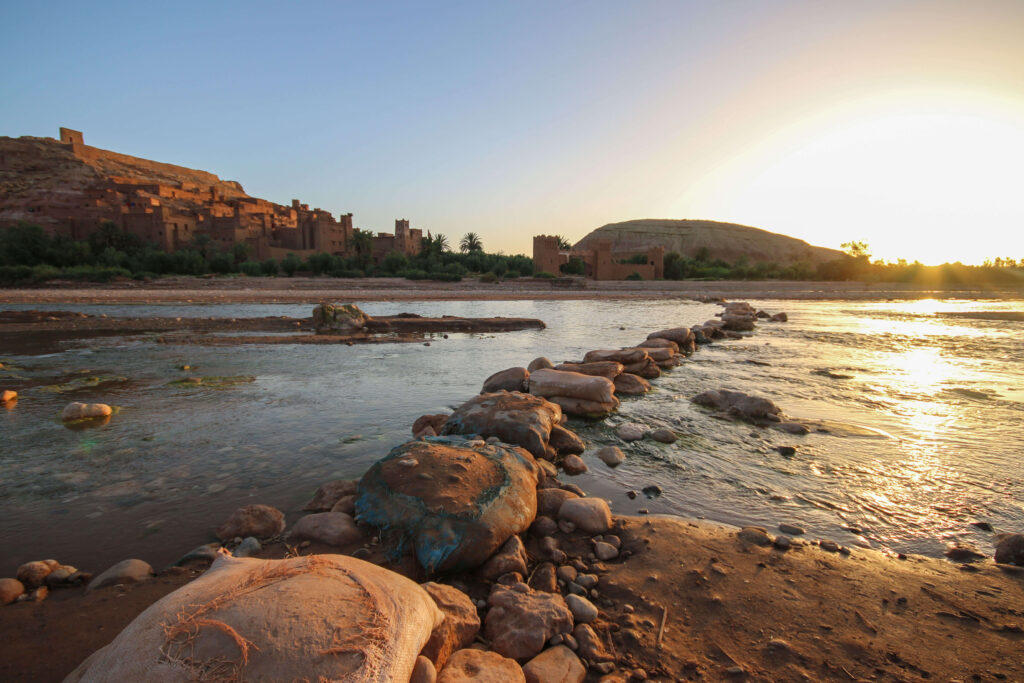
Exploring Ait Benhaddou
Ait Benhaddou lies alongside a modern village where you’ll find a good choice of boutique hotels and guesthouses. Additionally, there are plenty of restaurants serving Moroccan specialties. It’s here that you’ll arrive, whether you’re coming by grand taxi, hire car or on a private tour.
A bridge connects across the river to the entrance to the ksar and UNESCO World Heritage Site.
Ait Benhaddou really is a place for wandering, with narrow, winding alleys leading between its earthen kasbahs and hidden homes. As a living village, the site has no gates or opening hours, so you can explore freely at your leisure.
While there’s no official entry fee, you may be asked for a small donation. This will help with the upkeep of the site and provide support to the local community.
Within the ksar are a handful of museums and historic homes that can be entered for a couple of dollars. These offer a fascinating insight into life in this unique village. Marvel at Amazigh arts and crafts in the House of Orality or learn about the Hollywood blockbusters filmed in the area at the Cinema House.
As Ait Benhaddou was used as a film setting for “Game of Thrones”, it really is a “must visit” for fans of the TV series.
In addition to a mosque for prayer, there’s a caravanserai that once welcomed merchants and travellers. Plus, there’s an imposing kasbah from where the chieftains once ruled. Up on the hill’s summit is a crumbling agadir, a former granary and lookout post. This is the place to watch the sunset in Ait Benhaddou!
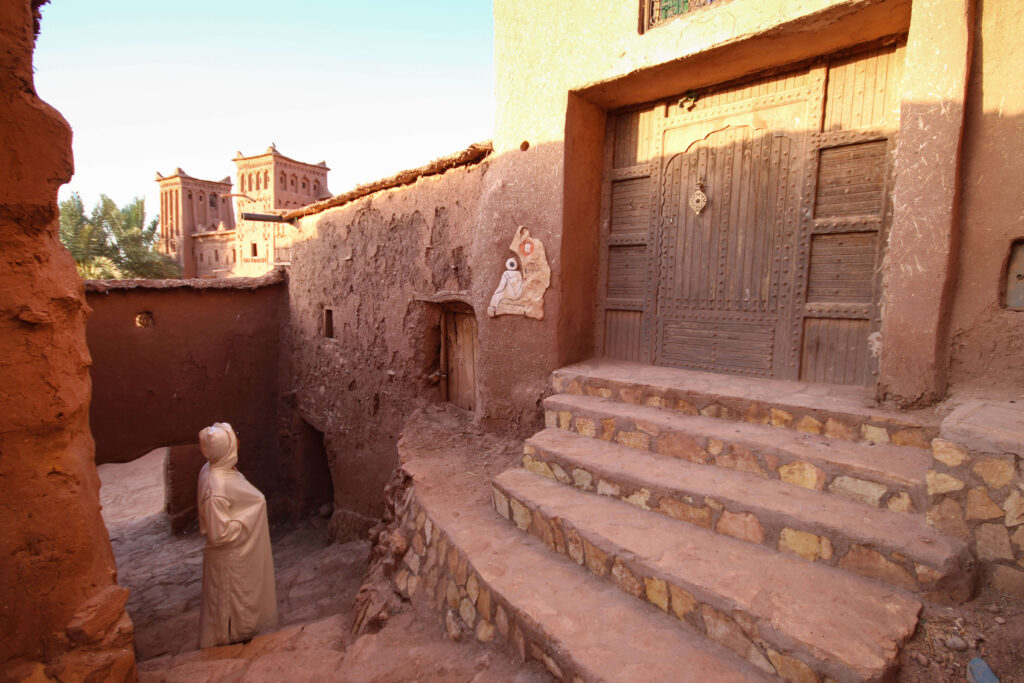
Tours to Ait Benhaddou
While wandering the ancient ksar of Ait Benhaddou is an incredible experience in itself, you’ll gain so much more on a guided tour. With a knowledgeable local at the helm, you’ll be immersed in the history of the site and the important role it played on the trans-Saharan trade route.
If you’re travelling to the village independently, I recommend checking out this two-hour guided tour of Ait Benhaddou. It’s available in English, French or Spanish. It includes tea in a traditional Amazigh home and the guide, Mohammed, receives glowing reviews.
If you want to visit Ait Benhaddou as a day trip from Marrakech, consider this full-day Ait Benhaddou and Ouarzazate day trip. It takes you over the spectacular Tizi-n-Tichka Pass and includes around two hours in the ancient ksar.
Keep in mind that the journey from Marrakech to Ait Benhaddou is more than three hours each way. So you will be spending a lot of time on the road.
Both Viator and GetYourGuide are good starting points for researching tours to Ait Benhaddou, complete with reviews from previous travellers.
Ait Benhaddou can also be visited en route to the Sahara Desert, ideally as part of a three-day tour. Two days is just too short in my opinion. Most Sahara tours start/end in either Marrakech or Fes and include a camel trek from the gateway town of Merzouga.
Not only will you have ample time to explore the winding alleys and earthen brick towers of Ait Benhaddou. But you’ll get to experience the sweeping sand dunes of the Sahara and the dreamy landscapes of Dades and Todra gorges.
For a three-day/two-night tour, check out this Marrakech to Merzouga Sahara Desert Adventure. It includes one night at an Amazigh camp in the dunes and takes in some of my favourite parts of Morocco, all at a relatively relaxed pace.
If you want to begin in Fes and be dropped off in Marrakech, this 3-day Sahara Desert tour is ideal. It also makes a stop in Ait Benhaddou and includes a night in Dades Gorge.
Alternatively, you can base yourself in Ouarzazate and get a private transfer to Ait Benhaddou in the early morning/late evening. Ouarzazate is only 30 minutes away and there are lots of hotels where you can overnight.
To learn more about Ouarzazate, check out my Essential Travel Guide to Ouarzazate.

How to get to Ait Benhaddou
The fastest and most convenient way to get to Ait Benhaddou from Marrakech is to rent a car and drive yourself OR join a guided tour.
Renting a car in Marrakech is ideal if you feel confident driving in Morocco. It’s also really cost-effective if you’re travelling in a group. Guided day trips from Marrakech to Ait Benhaddou are more expensive. But they come with the added benefit of having a local guide and driver at the helm.
Getting to Ait Benhaddou can be a bit of a challenge using public transport since there aren’t any direct buses.
If you’re travelling from Marrakech, the cheapest option is to catch a Supratours or CTM bus heading to Ouarzazate. This takes about five hours. Once you reach Ouarzazate, you can grab a grand taxi to Ait Benhaddou.
Another option is to get off the Marrakech-Ouarzazate bus at the Ait Benhaddou junction. From here, you can (hopefully) find a share taxi for the final leg of your journey. This is much easier for solo travellers than couples or groups.
Remember, share taxis only leave once full. They won’t stop en route if they are already packed to the rafters!

Best places to stay in Ait Benhaddou
Each time we’ve visited Ait Benhaddou we have stayed overnight and I’ve loved exploring the ksar once the tourist groups leave for the day. The light at sunrise and sunset is also magical for taking photos, something that is only really possible if you stay the night.
The good news is, there is a growing number of wonderful places to stay in Ait Benhaddou, including boutique hotels and family-run guesthouses. Most have restaurants onsite, so you can come home to a delicious meal at the end of a long day’s exploration.
Below are a few of my top picks or you can discover more inspiring places to stay in Ait Benhaddou here.
Dar Mouna La Source $
Just a stone’s throw from the gates of the fortified village, this Ait Benhaddou hotel offers comfortable rooms and a refreshing swimming pool where you can retreat during the heat of the day. Breakfast is included and the staff receive rave reviews for their hospitality.
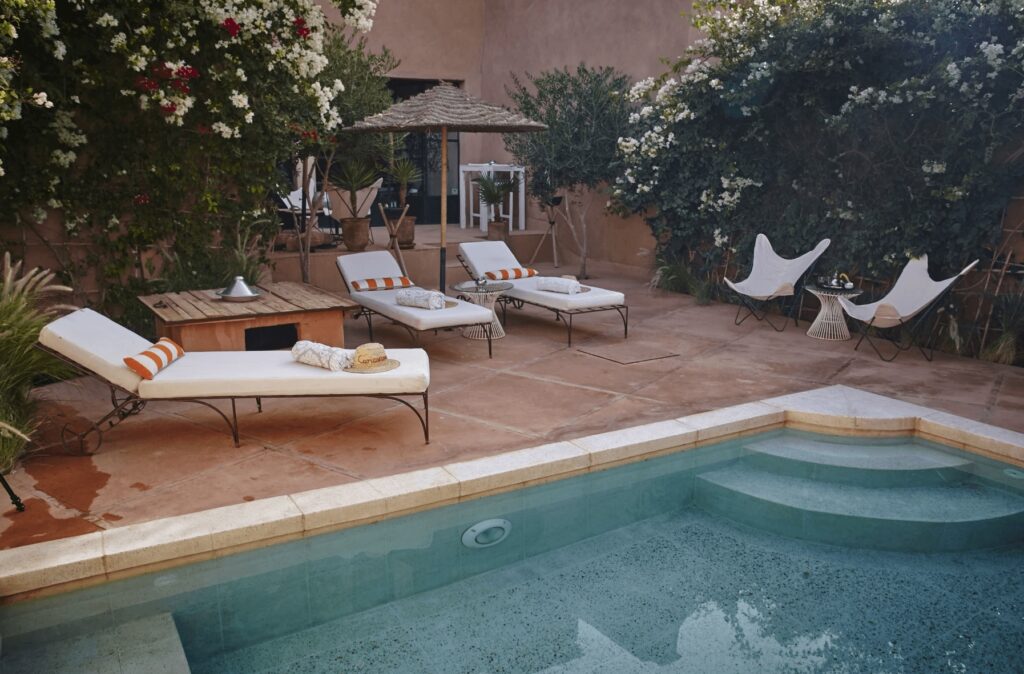
Riad Caravane $$
With its decor inspired by an ancient kasbah, this enchanting hotel offers a range of suites suitable for couples, families and independent travellers. There’s a swimming pool with sun loungers, a daybed on the rooftop terrace and a restaurant serving regional specialties.
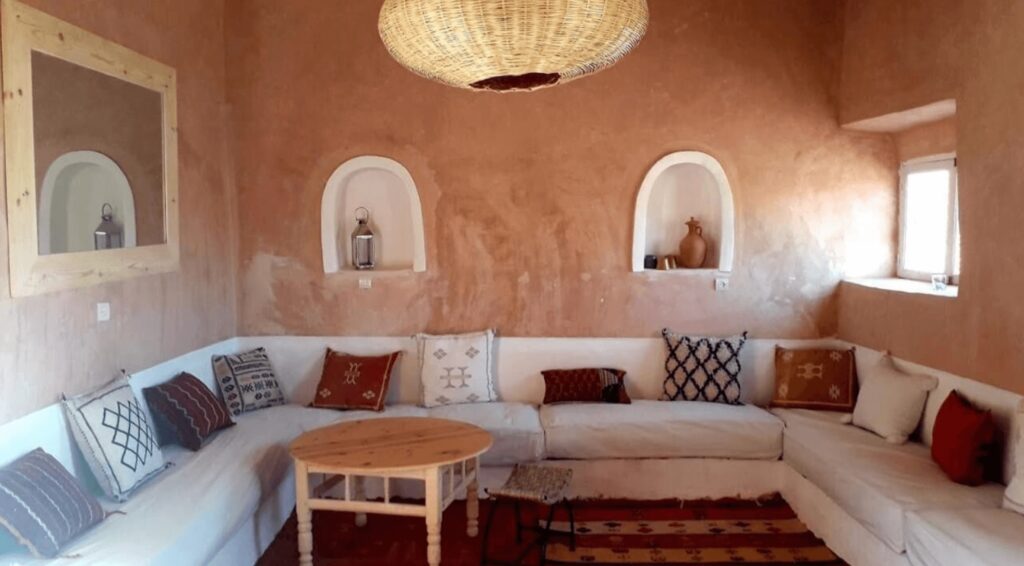
Tigmi Hamid $
While located a little further from the UNESCO site, this family-run Ait Benhaddou guesthouse receives rave reviews for its hospitality and delicious tagines. It has been thoughtfully decorated with Amazigh textiles and features a sun-drenched interior patio where inclusive breakfasts are served.

Best time to visit Ait Benhaddou
For warm weather fans, the best time to visit Ait Benhaddou is from late spring through to early autumn. By June, temperatures can be in the mid-30s and exploring the ancient ksar during the middle of the day may be too much for some.
In July and August, daytime temperatures are often scorching. This is one of the busiest times at Ait Benhaddou due to the European and North American summer holidays.
If you prefer smaller crowds and milder temperatures, visit during the shoulder seasons of March to May or September to November. You’ll get warm days to explore the winding streets, without the intense summer heat.
For a quieter, more local experience, consider visiting Ait Benhaddou in the winter months. Daytime temperatures hover around 10 degrees Celsius, so it’s brisk but comfortable enough with the abundant sunshine.
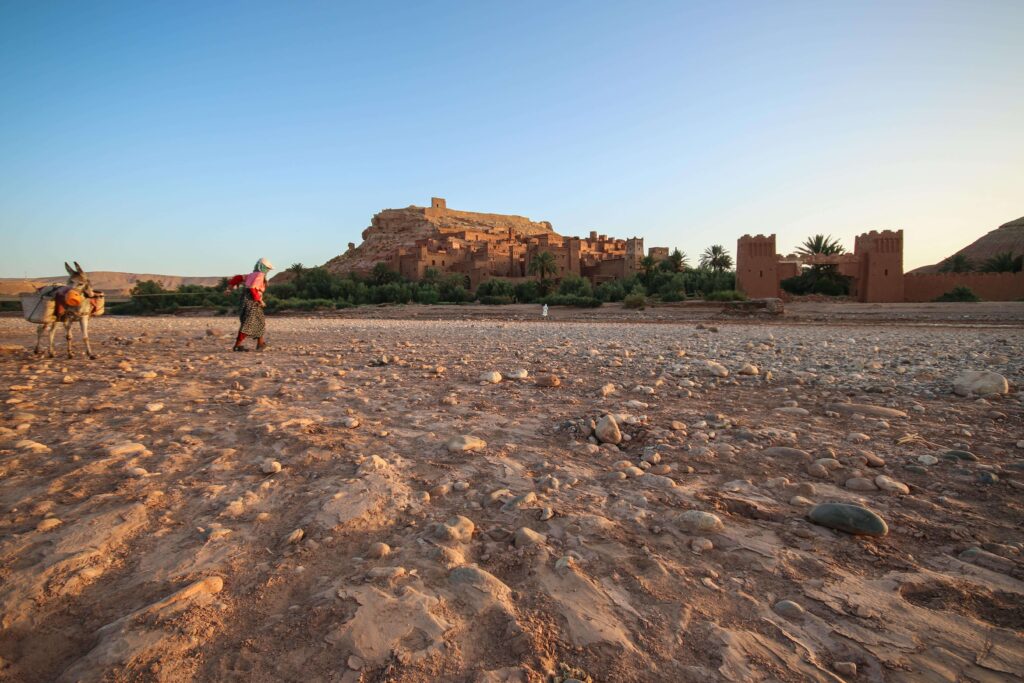
FAQs
Where is Ait Benhaddou?
Ait Benhaddou is located around 100 kilometres to the southeast of Marrakech and is reached by passing over the Tizi n Tichka Pass of the Atlas Mountains. Ait Benhaddou is located en route to Ouarzazate, which is just 25 kilometres from the ancient site.
What is the best way to reach Ait Benhaddou?
Getting to Ait Benhaddou is a little tricky with public transport as there are no direct buses.
The best option is to hop on a Supratours or CTM bus bound for Ouarzazate, with the journey taking around 5 hours one-way. From Ouarzazate, you can take a grand taxi to Ait Benhaddou.
Alternatively, you can get off the bus at the junction to Ait Benhaddou and (fingers crossed) hail a share taxi for the final stretch.
A faster and more convenient way to reach Ait Benhaddou is to hire a car in Marrakech and drive yourself OR join a guided tour.
How much does it cost to visit Ait Benhaddou?
As Ait Benhaddou is a living village, there is no official entrance fee. That being said, you may be asked to make a donation upon entry, so have some spare dirhams ready. I feel this is more than reasonable to support the continued preservation of Ait Benhaddou and the communities who live here.
If you want to visit some of the ksar’s museums and historic homes, admission to these individual attractions ranges from 20dh to 50dh.
What are Ait Benhaddou’s opening hours?
Unlike many historical sites, Ait Benhaddou is a living village still inhabited by families, so it doesn’t have official opening hours and is never “closed”. While select museums and historic structures within the ksar have visiting hours (usually from around 9 am to 6 pm), the village itself is open 24/7.
Are there tours to Ait Benhaddou?
Whether you’re after a short, guided tour of the ancient ksar or a multi-day trip from Marrakech and Fes, there are plenty of Ait Benhaddou tours to choose from.
If you’re travelling independently, I recommend checking out this two-hour guided tour of Ait Benhaddou, which is available in English, French or Spanish.
For those wanting to visit as a day trip from Marrakech, this full-day Ait Benhaddou and Ouarzazate day trip takes you over the spectacular Tizi-n-Tichka Pass and includes around two hours in the ancient ksar.
For a memorable two-night tour, check out this Marrakech to Merzouga Sahara Desert Adventure, including one night at a desert camp. You can also experience Dades and Todra gorges on this 3-day Sahara Desert tour, which can start/end in either Marrakech or Fes – perfect if you want to transfer between the two cities.
Is Ait Benhaddou worth visiting?
Yes! Ait Benhaddou is most definitely worth visiting. Simply put, it’s an enchanting place that will appeal to culture vultures, history enthusiasts and film buffs alike.
If time allows, I highly recommend staying overnight to explore the site without the crowds and enjoy the atmospheric sunrise/sunset light for photography. But if you’re short on time and can only visit for a couple of hours during a day trip or multi-day tour, Ait Benhaddou is still an incredible place to explore.
When is the best time to visit Ait Benhaddou?
Ait Benhaddou is a year-round destination, but visiting during different seasons offers different experiences. For those who don’t love the heat, I think spring to autumn is ideal. By June, temperatures soar into the 30s, making mid-day exploration a hot adventure. July and August bring really hot temperatures to Ait Benhaddou’s desert environment.
Ideally, I’d recommend visiting during the shoulder seasons of March-May or September-November. You’ll find pleasantly warm days to meander the winding alleys, without the intensity of summer.
For a quieter, more local vibe, bundle up and visit in the winter months. Despite the brisk days (around 10°C), the abundant sunshine makes it comfortable for exploration.

PLAN YOUR TRIP WITH MY FAVOURITE RESOURCES:
Find hotels via Booking
Book tours and attractions via Viator or GetYourGuide
Find a rental car via Discover Cars
Book flights via Kiwi or Booking
Search for buses and trains via 12Go or Omio
Get travel insurance via SafetyWing
Buy a digital eSIM with Airalo
By purchasing through my links, you’ll be supporting my website at no additional cost to you

About Me
I’m Malika, a global traveller who first visited Morocco in 2014 before marrying a local and settling down in a little village on the Atlantic coast. Over the years, I’ve developed an intense love for Morocco, its incredible landscapes, storied cities and the exceptionally generous hospitality of its people.
Malika in Morocco is a place to share my years of experience exploring the country, from north to south and from the Atlantic Ocean to the Sahara Desert. As a resource for travellers visiting Morocco, I want to encourage others to experience this captivating destination the way they desire, whether that’s independently or under the expert guidance of local tour operators.
I believe strongly in supporting responsible and sustainable tourism initiatives while inspiring travel experiences that are life-impacting and mutually beneficial for both travellers and locals.
-
Essential Guide to Hiking Mount Toubkal
Thinking about hiking Mount Toubkal? Discover everything you need to know about scaling North Africa’s highest peak, from access to guides and what to expect on the trail. Trekking to the 4,167 metre (13,671 feet) high summit of Mount Toubkal is a bucket list experience for many travellers to Morocco. After all, it is the highest peak in North…
-
9 Best Family Hotels in Marrakech for a Kid-Friendly Stay
Looking for the best family hotels in Marrakech? Explore this curated collection of riads, resorts and apartments that cater to travellers visiting Morocco with kids. There’s no denying it – Marrakech is an incredible destination and one of Morocco’s most popular places to visit. But it can also be an assault on the senses and…
-
Stunning 5-Star Marrakech Hotels for a Luxe Stay in the “Red City”
Looking for the best 5-star Marrakech hotels? Discover 10 incredible places to indulge in a high-end stay in Morocco’s “Red City”. There’s no denying it – Marrakech is an irresistible getaway. It’s located a short flight from many European destinations but with the feeling of being a world away. In my opinion, this historic North…
-
5 Unforgettable Tours to the Sahara Desert from Marrakech
Looking for the best tours to the Sahara from Marrakech? Explore this curated collection of multi-day Moroccan desert trips, including budget-friendly small group adventures and private desert tours in Morocco. Spending a night under the star-studded sky of the Saharan desert is an amazing experience. It’s something that I’ve been lucky enough to do. The…
-
7 Best Places to Stay in Ait Benhaddou: Morocco’s Ancient Ksar
Looking for the best places to stay in Ait Benhaddou? Explore this curated collection of auberges, guesthouses and hotels, all within easy reach of the UNESCO World Heritage-listed ksar. Set against the dramatic backdrop of the High Atlas Mountains lies the fortified ksar of Ait Benhaddou – an ancient walled city that is now designated as…
-
10 Best Budget Riads in Marrakech: Morocco’s “Red City”
Looking for the best budget riads in Marrakech? Discover 10 incredible places to stay if you’re planning an affordable trip to Morocco’s “Red City”. Every time I visit Marrakech, I like to find a new riad to stay in. Considering the city’s abundance of options, I think it will be a never-ending quest! I love…
